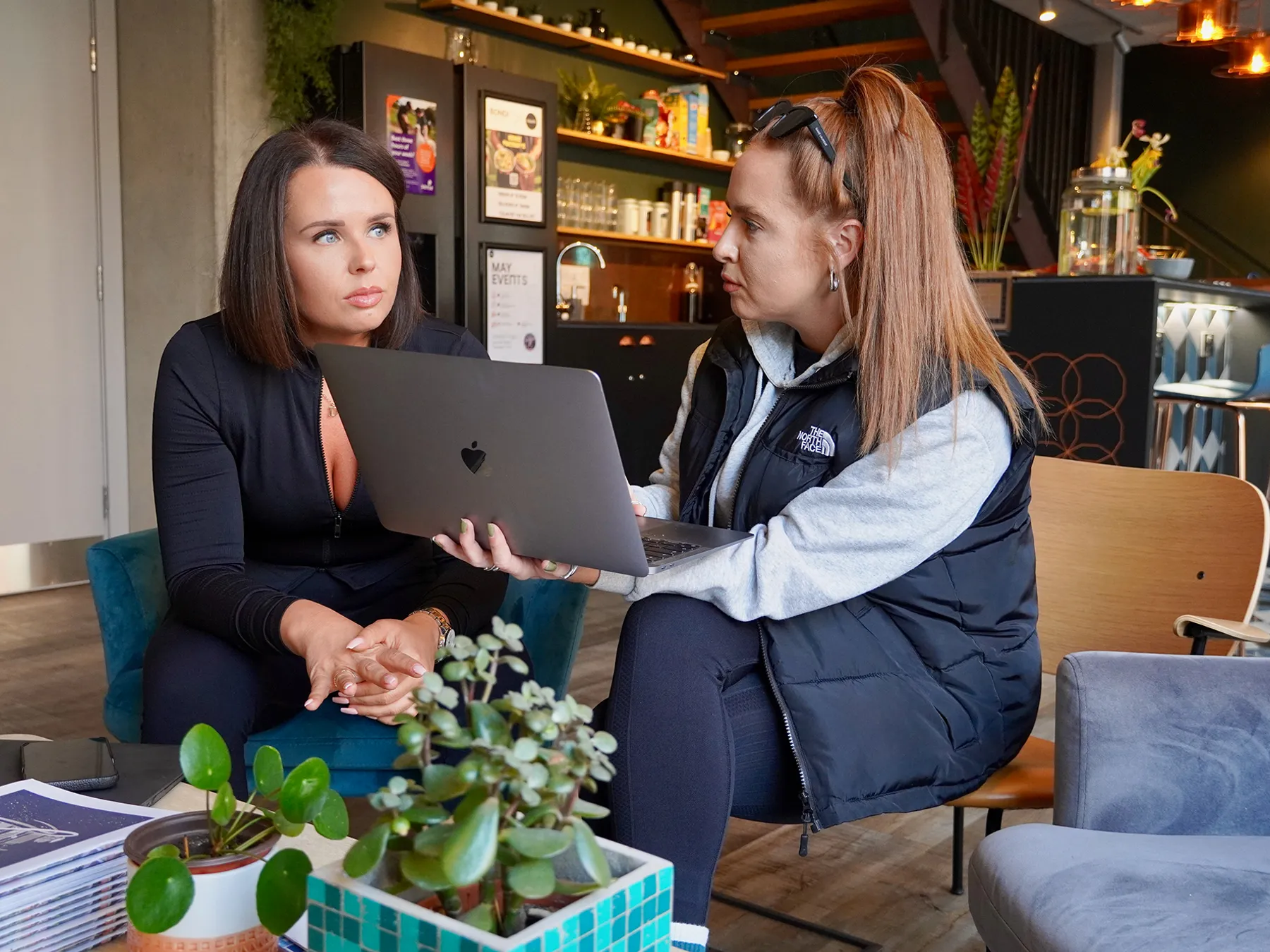Marketing Strategy
Branding
Activations
Social Media
Get to know us
Crafting Memorable Customer Events in the Digital Age


Primrose Sinkinson
Contents
The digital age is reshaping how businesses connect with their audiences. In today's landscape, technology has become an essential tool for engaging customers in meaningful ways. Gone are the days when traditional event hosting methods sufficed. Now, the focus is on crafting impactful experiences that foster emotional connections and brand loyalty. According to research from the Event Marketing Institute, 75% of UK marketers believe that experiential marketing directly enhances brand loyalty, underscoring the need for innovative and tech-driven event strategies.
Businesses are increasingly embracing digital platforms, with 80% of event planners now utilising apps to enhance engagement. This reflects a shift towards creating standout experiences that leave a lasting impression. The rise of virtual reality (VR) and augmented reality (AR) technologies is also pivotal, offering immersive environments that capture attention and enrich the event experience. Such tools are revolutionising engagement, with AR, in particular, boosting user interaction by up to 70%.
Personalisation is at the heart of modern event planning. By leveraging data analytics and customer insights, businesses can tailor experiences to resonate on an individual level. This personalised approach not only makes attendees feel valued but also strengthens the bond between brands and consumers, evidenced by 90% of consumers preferring personalised interactions.
Creating memorable customer events has become a strategic necessity. Companies that excel in building emotional connections enjoy higher customer loyalty and engagement rates, as highlighted by the Chartered Institute of Marketing. By adopting contemporary event strategies, businesses can significantly enhance brand loyalty and drive growth.

Virtual vs. In-Person Customer Events
Lately, there's been a lot of talk about whether virtual or in-person customer events are better. This debate highlights how we're changing the way we connect with people and businesses. As work and consumer landscapes evolve, we're focusing more on flexibility, accessibility, and tech integration.
Traditionally, in-person events have been the go-to choice for businesses wanting to connect with their audience face-to-face. There’s something special about talking to someone in person—those spontaneous chats help build strong connections that are hard to match online. Plus, the experience of being at an event, with all its sights, sounds, and even smells, really sticks with you. These events are great for networking, letting people build both professional and personal relationships. And with physical booths and live demos, companies can show off their stuff in a big way.
But with the world becoming more global and tech-savvy, virtual events are getting a lot of attention. They have some big perks—mainly, they’re super accessible. People from all over can join in without worrying about the hassle and cost of travelling. This means companies can reach a more diverse crowd and share their content widely, without limits on who can attend. In the UK, a recent study found that 73% of event organisers plan to maintain or increase their use of virtual events, emphasising how digital solutions are becoming integral to reaching wider audiences.
Virtual events are also a money-saver. No need to pay for renting a venue, travel, or accommodation costs, so businesses can use their budget better and maybe even put on more or larger events. This can also mean cheaper tickets for attendees, making it easier for more people to join in.
Plus, virtual platforms come loaded with great tools for tracking data. Businesses can see how people are engaging—like who’s attending, which links they’re clicking, and how active they are in Q&A sessions. This kind of info is gold for planning future events and marketing. It's a smart way to tailor what you’re offering to what attendees really want.
Both virtual and in-person events have their merits, and hybrid events are the sweet spot—combining the best of both worlds. They let you cater to everyone’s preferences while maximising reach and interaction. People can choose whether to join in person or online, depending on what suits them best.
Hybrid events can expand the audience of physical events by allowing those who can’t travel to still take part. On the flip side, adding in-person moments to a virtual event can give deeper interactions for those who enjoy face-to-face meetings. You might stream keynotes and panels to a worldwide crowd while hosting smaller sessions and networking on-site.
When planning a hybrid event, technology integration is key. Use reliable virtual tools with features like live streaming and interactive polls, and make sure the in-person parts are engaging.
Getting the mix right between virtual and in-person is crucial. Think about what your audience wants, what your content demands, and the goals you’re aiming for with the event. The aim is to deliver value and interaction, no matter how people choose to participate.
Going hybrid has tons of benefits. Not only do you reach more people, but you also get more engagement by offering multiple ways to interact. Plus, it gives you access to a wealth of analytics that can help make follow-ups and future events more personal. Showing you can adapt and use new ways to engage viewers also boosts your brand’s image.

Integrating Product Showcases Effectively
Integrating product showcases into your business strategy can seriously boost how your brand is seen, get more customers engaged, and ramp up your sales. In today’s bustling market, it's not just about having a cool product—it's about showing it off in a way that makes people stop and pay attention. A killer product showcase mixes up tech, creativity, and some smart positioning to really show off the value of what you’re offering. Here's how you can make your product showcases pop and really leave a mark.
First off, knowing your audience inside and out is a game-changer. Every move you make with your showcase should come from a deep dive into who your customers are, what they’re into, and how they like to interact with products. Get into data analytics and customer feedback to sleuth out what makes your audience tick. By shaping your showcase to fit these insights, you'll hit the right note and hold their interest.
Next, figure out the best way to present your products. Thanks to the digital world, you’ve got tons of options—from in-person setups to full-on digital displays. For physical products, think about creating an eye-catching display in a retail setting where people can touch and feel the items. Digital products might shine in online demos or interactive webinars that let you show off features through screen shares and live tutorials. In the UK, 67% of consumers now prefer video content for learning about new products, indicating the growing impact of digital showcases on consumer preferences.
Your content matters too. Tell an engaging story about your product, its journey, or its perks to really capture people's imagination. You can do this with videos, infographics, and even lively social media posts. High-quality visuals paired with snappy, compelling text are key in making an emotional connection with your audience, possibly swaying their buying choices.
Don’t overlook the power of personalisation. Use the insights you’ve gathered to tweak the showcase experience for different groups. Maybe change up the style or detail based on whether someone’s new or a regular customer. Incorporating CRM systems can help track personal preferences and interactions, ensuring those potential leads are nurtured with customised content and follow-ups.
Where you host your showcase can make or break its success. A well-designed website or app can offer a smooth and engaging experience. For in-person events, the ambiance, lighting, and layout can make a big difference in how customers perceive the experience. Use tech to your benefit: set up tablets or touchscreens in stores for added interaction, and ensure your online platforms are easy to navigate and look great on any device.
Social media can help your product showcase go viral. Through targeted ads, influencers, and content created by users, your product can reach lots more people. Encouraging customers to share their experiences on social media acts like genuine promotion, boosting visibility and engagement. Teaming up with other brands or influencers with similar audiences can expand your reach even more.
To really see how well your showcases are doing, set clear goals and keep track of them with metrics. Things like conversion rates, engagement levels, and customer feedback can give you a good sense of how successful your showcases are and what could be improved. Use automated tools and analytics platforms to make this process easier, giving you detailed reports with key insights over time.
Finally, think about what happens after your showcase. Follow-up communication should definitely be part of your game plan. Sending out newsletters, discounts, or personalised thank-you notes adds value and keeps the engagement going. This ongoing interaction not only builds stronger relationships with customers but also opens doors for upselling and cross-selling.

Harnessing Feedback for Continuous Improvement
In the business realm, continuous improvement relies heavily on harnessing feedback, which serves as a critical driver of progress and innovation. Feedback is not merely a response mechanism; it’s a golden ticket for connecting with the people who matter most—customers, employees, and partners. Establishing feedback channels cultivates a culture of openness and honesty, fostering trust and accountability. Whether through surveys, social media interactions, or customer service discussions, feedback provides direct insights into brand engagement, offering a rich data source for businesses to extract actionable insights.
Understanding customer sentiments through regular feedback collection allows businesses to fine-tune their offerings, better align with customer needs, and address underlying issues. For example, consistent feedback about a product's usability can catalyse redesigns or feature updates, enhancing customer satisfaction and loyalty. Capturing feedback from various stages of the customer journey—initial contact, purchasing, after-sales service, and loyalty programs—offers a comprehensive viewpoint, ensuring a cohesive customer experience. In the UK, 76% of customers believe that businesses can improve their services based on customer feedback, emphasising the tangible impact of leveraging these insights for enhancement.
Embedding feedback in decision-making processes is crucial for fostering a continuous improvement culture. This involves creating an environment where feedback is actively sought and acted upon, promoting a mindset that embraces learning and growth. By integrating open communication and truly listening to feedback, companies can transform insights into tangible improvements. Feedback loops play a pivotal role, continually collecting, analysing, and responding to input. Engaging with stakeholders through these loops demonstrates a commitment to addressing concerns and refining strategies. For instance, a hotel could adjust staffing during peak hours in response to guest feedback about delays, thereby enhancing operational efficiency and guest satisfaction.
Embedding feedback into business strategies also fortifies relationships with stakeholders, underscoring the importance of their input and showcasing the company's dedication to enhancing their experiences. This approach fosters respect, solidifies partnerships, and nurtures a collaborative environment that sparks innovation. For businesses, viewing feedback as a core survival skill rather than a mere nicety is imperative. Those that recognize feedback as a treasure trove of opportunities effectively distinguish themselves from competitors and uncover new growth pathways.
Continuous feedback enables businesses to remain agile, swiftly adapting to evolving marketplace demands and customer expectations. This nimbleness not only drives operational success but also positions companies to consistently deliver exceptional value to their audience. Take tech companies, for example, which often release software in early stages to gather user feedback. This input is crucial for identifying bugs, improving user interfaces, and enhancing overall functionality before the final product launch. Such practices not only elevate product quality but also engage users in the development process, fostering brand loyalty and connection.
To harness feedback effectively, businesses must first identify the most relevant channels for their industry and target audience—such as online surveys for tech startups or in-person interviews for luxury brands. Once collected, feedback needs to be sorted, analysed, and interpreted to identify patterns and common concerns. Leveraging analytics tools can refine this process, yielding precise, actionable insights.
Implementing changes based on feedback involves prioritising issues that most impact customer satisfaction and business health. This strategic prioritisation ensures resources are allocated efficiently, aligning improvements with key business objectives. After implementing changes, it is essential to communicate back to stakeholders, reinforcing that their feedback is valued and impactful.

In conclusion?
Remember this: in the digital age, the game has changed. It's no longer about just hosting an event but about crafting experiences that truly resonate with your audience. Think of it as having an icecream with three types of toppings, technology, personalisation, and engagement – each thread adding to a vibrant, unforgettable experience.
Hybrid events, with their ability to bridge the gap between physical and virtual worlds, are the perfect example of this evolution. They let us reach a wider audience, cater to diverse preferences, and create meaningful connections. But it's not just about the "what" but the "how." By incorporating creative, interactive, and engaging activities, we can truly captivate our audience and leave a lasting impression.
And let's not forget the importance of feedback. It's the secret ingredient that fuels continuous improvement, helping us adapt, refine, and evolve. By embracing feedback as a constant source of learning, we can stay ahead of the curve and continually deliver exceptional value.
In the end, crafting memorable customer events is about more than just throwing a great party – it's about forging deeper connections, building stronger relationships, and ultimately driving business success. So, let's embrace the power of creativity, innovation, and feedback as we continue to shape the future of customer engagement in this dynamic digital landscape.

Speak to Jordan today
Grab a brew. Have a read
You might also like...







